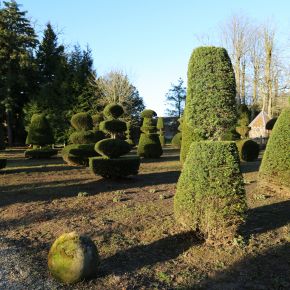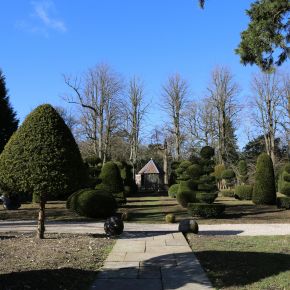Taxus baccata
(Yew)
Family - Taxaceae
Category - Conifer, hedging, topiary
Origin - Europe and Western Asia
Season of Interest - Spring, Summer, Autumn, Winter
Hardiness - H7
Height - 10m or more
Width - 8m or more
Location - The Cloister Garden, The Cool Garden, The East Border, The Exotic Garden, The Grounds, The Hot Garden, The House Border, The Parterre, The Pond Garden, The Topiary Meadow, The Walled Garden, The Wedding Ring Border, The White Garden
Description: A versatile, small to medium-sized Evergreen, coniferous tree, which, if left to its own devices will have an upright habit and a rounded outline with spreading branches. Taxus baccata can also be grown as a Shrub and lends itself well for use as topiary and hedging. Glossy, dark green, linear needles with pointed tips are held in 2-rank formation. Male and female cones are produced on separate plants from late winter into mid-spring. The male cones are round and yellow. The female cones are conical and green, and followed by red, Berry-like arils containing dark green seed. All parts of Taxus baccata are poisonous if ingested, except for the red aril, but the seed within is toxic. Taxus baccata is renowned for its ability to attain great age. Some of the oldest specimens can be observed in churchyards and are thousands of years old.
Award of Garden Merit (AGM).
Additional common names include - English Yew, Common Yew
Foliage:
Glossy, dark green needles are linear with pointed tips. The needles are held in 2-rank formation along the spreading branches.
Foliage Senescence: Evergreen
Foliage Shape: Needles
Poison Information:
This plant is poisonous.
Most parts of the plant are highly poisonous. The seed is particularly toxic, however, the fleshy red aril surrounding the seed is the only part of this plant that is not poisonous.
Propagation:
Cuttings, seed.
Cultivation:
Suitable for sun or shade, but requires a well drained soil. Taxus baccata will not tolerate water logging.

